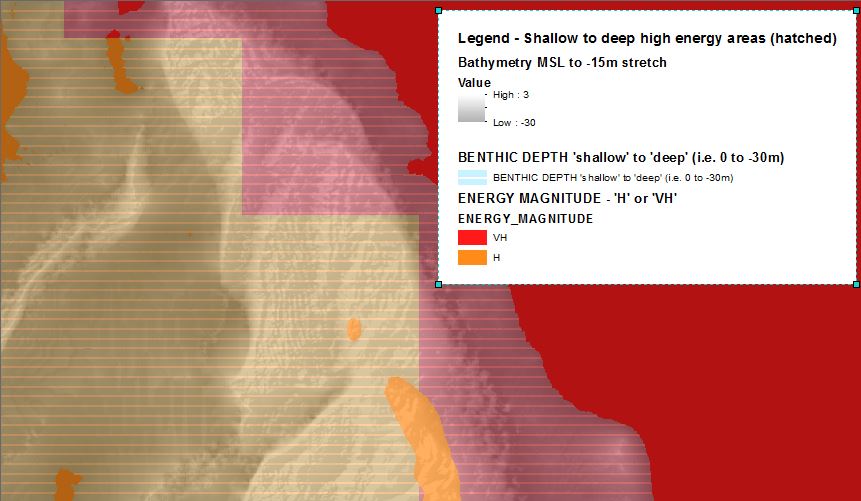|
|
Subtidal high energy over unknown substrate in shallow to deep waterShort descriptionSubtidal areas of high wave energy, in shallow to deep water where substrate is unknown. Disclaimer: Ecosystem type descriptions are based on biophysical attributes identified in Central Queensland through expert advice and supported by scientific literature. Not all ecosystem types are mapped based on current inventory, and many of the ecosystems described here may also occur in other parts of Queensland.
Classification categoriesSelect from the links below to view related ecosystem type categories Long descriptionSubtidal areas of very high to medium wave energy, in shallow to deep water where substrate is unknown. This type was initiated where there was no date other than Benthic depth, Inundation and Energy magnitude. Substrate not mapped, no data available, typically these areas would have been associated with high energy beaches and creek/river mouths. Special valuesHigh energy from currents in shallow to deep water can be important for transporting biota, such as turtle hatchlings, into the offshore water column where they can access major regional current systems[1]. Diagnostic attributes:Inundation ‘Subtidal’ Benthic depth ‘Shallow (0-10m)’, ‘Deep (10-30m)’ Energy magnitude (wave) ‘Medium’, ‘High’, ‘Very high’ Consolidation 'Unknown' Structural macrobiota 'Unknown' Sediment texture 'Unknown' DistributionThis type is restricted to areas lacking in inventory on sediment, potentially south of Fraser Island and in an area between Agnes Water and Bustard Head. Potentially it occurs in other parts of Queensland within high current energy areas lacking in substrate mapping (e.g. areas with high tidal range or areas with high current energy). CommentsThis typology is restricted to wave energy and designed for data-poor areas where the consolidation of the substrate is unknown, sediment texture unknown and biota unknown. Application of the energy source attribute in a typology combining both wave and current energy datasets to produce a dataset reflecting seabed stress would result in a mappable type if used to split unconsolidated types. References
Last updated: 22 July 2019 This page should be cited as: Department of Environment, Science and Innovation, Queensland (2019) Subtidal high energy over unknown substrate in shallow to deep water, WetlandInfo website, accessed 30 August 2024. Available at: https://wetlandinfo.des.qld.gov.au/wetlands/ecology/aquatic-ecosystems-natural/estuarine-marine/descriptions/110/ |

 — Department of Environment, Science and Innovation
— Department of Environment, Science and Innovation


